Mixing modern melody with prose and poetry, Kashmir’s new-age singers and musicians have resurrected folk songs in a different way. Creating their own platforms, this new breed of artists is reaching out to audiences using social media. While keeping alive art and culture of the place, they are finding success as well, reports Khalid Bashir Gura
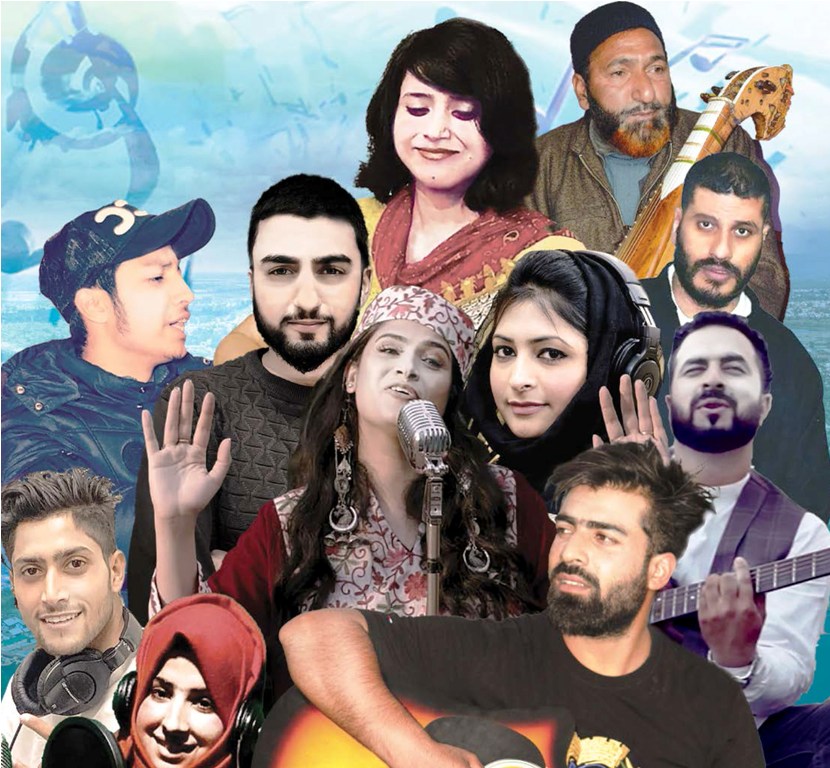
As the world is passing through apparently, the fourth industrial revolution, life is increasingly getting; virtual. While the process remains the same, systemic shifts now change the delivery. One of the hugely impacted spheres of activity that has undergone a Himalayan shift is the mass media.
Notwithstanding the frequency with which the internet outages are implemented in Kashmir, the change dictated by the most democratic institution, the internet is visible in all sectors of life. The traditional, cultural sector is yet to make a formal move to adopt the change. The resultant vacuum was filed by the tech-savvy generation that dictates the new trend on traditions, thus diluting the way lyrics and music are composed, processed and eventually showcased.
Unlike artists, people have adopted the change. They don’t stay abreast with newer development or purchase online alone, they source their entertainment and music from the internet; worlds information superhighway. Tens of millions of Kashmiri have watched Kashmiri music online. In the top 10 numbers of the Kashmiri music chart in 2020, there is barely an established singer. Even if they are, they don’t figure prominently. This is despite the fact that the popular number lack many things, argue critics.
1. Maharaza Ho
Basit Maqbool Sheikh, 21, popular as Sanam Basit, a resident of Batmaloo, belonged to a family of singers. His five uncles and his father are professional singers. Though he used to hum Kashmiri songs since childhood, he never dared to sing publicly. In 2015, when he was studying in tenth class, his friend asked him to sing at his cousin’s wedding ceremony. They knew about his talent. Persuaded by elders at the party, Basit sung two numbers and the praises showered.
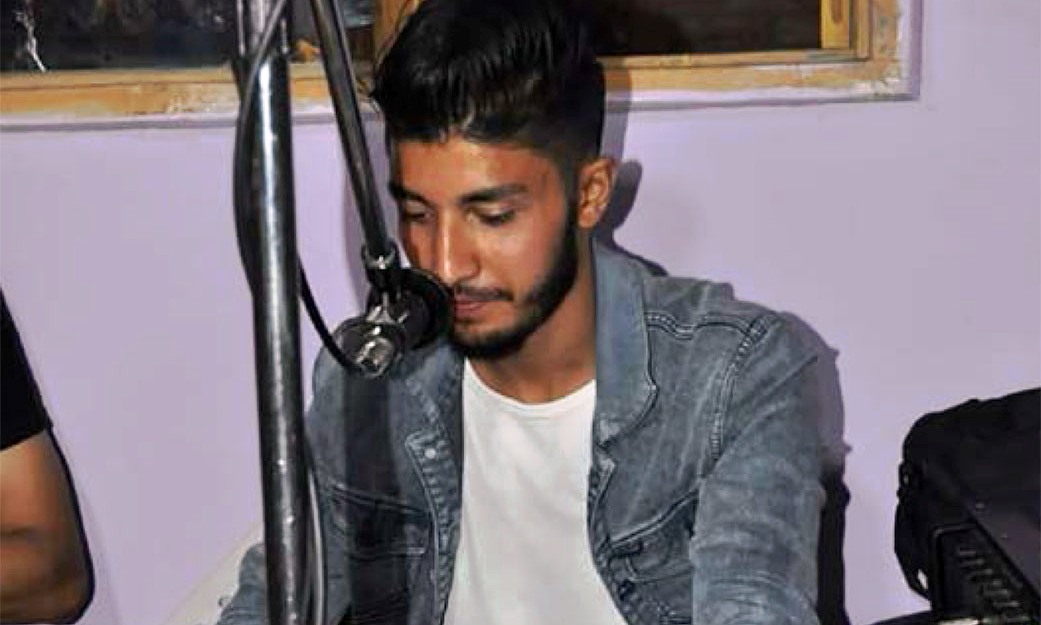
Soon, Basit started dreaming of singing at other platforms. One day his phone rang. It was an unknown voice from an unknown number. “How much do you charge for one-night of singing?” he asked. He had watched him sing on YouTube. Baffled, Basit retorted: “Rs 12000”.
To keep his promise, Basit told his parents he is attending a friend’s wedding. They expressly asked him not to sing.
A few years later, his secret was splashed all over social media. His folk song on YouTube, a feet-tapping number, Maharaza Ho, streamed in February 2019 has now 19 million views. It remains the most viewed Kashmiri song ever since virtual media took over the real one. Featuring Basit and company, its lyrics were written by his friend Nawabazar Basharat. His YouTube channel, Kashmiri Sound World Production, has more than 200 thousand subscribers.
“The mashup song is a remake of a 1990s Kashmiri number with western musical instruments and a high beat and was recorded in a studio,” Basit said. All through the song, Basit leads the chorus donning headphones. The song uses high bass encouraging listeners to dance. It is viral in every marriage season. There is nothing much in the number – the lyrics are addressed to the bridegroom telling his bride has great earrings; the home is bedecked with lights as there is congregation and festivity. “I got ecstatic when I saw it getting millions of views.” It helped his takeoff and he emerged as one of the most sought singers at Srinagar weddings and birthday parties. He also performed in Jammu at various Pandit weddings.
“Our costs vary,” Basir said. “For a band, we charge Rs 70,000 per night and for folk, it is almost half.”
Basit said Kashmiri songs used to be monotonous, low beat numbers pushing the new generation to Bollywood or Hollywood. “We responded to what people wanted and used western music and instruments in the Kashmiri songs,” he said.
The song at top of the chart lacks any impressive poetry or great professional skill. But that is not what the new generation requires. What is interesting, a duet of the same song that two youngsters – Amir and Umer, sing without an auto-tune, has 1.7 million views. In comparison, it is better recorded and natural.
In Srinagar, the MTI Studios which with thirty thousand subscribers, continues to give Kashmiri artists a label and a platform. On May 27, 2020, at the peak of the second lockdown, it released a duet by wedding singers Abdul Rasheed popularly known as Reshma, a trans-gender, and Sanam Basit. Six months later, it was watched by 20 lakh people. The song is a mashup of Reshma’s popular wedding song, Hai Hai Wesiyee. The video’s appealing cinematography focuses on Reshma dancing to the music and voice of Sanam Basit.
After Basit’s success, many singers started uploading their creations on their own YouTube channels so that the earnings come to them directly.
2: Dupti Nyunum
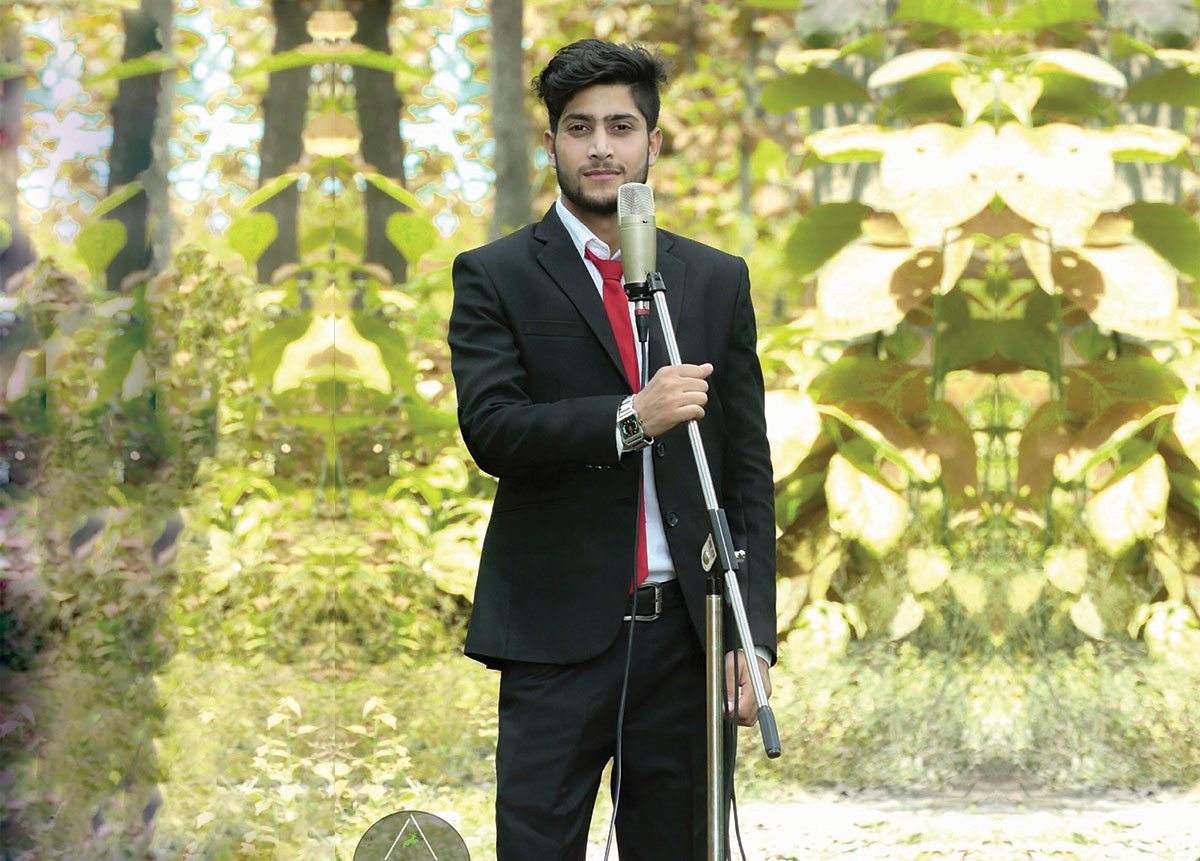
Adil Gurezi has been a singing sensation for many years now. In 2018, he sang Dupteh Neuneam (he took my scarf) and uploaded it on YouTube and so far it has more than 12 million views. These are very ordinary lyrics that appeal to the peripheral romance in the teenage. The other attraction is the singers attempt to speak sort of a compromised Kashmir that gives it an interesting spin and distinction.
“Its music arrangement has been done outside Kashmir, it has been shot outside, so is its sound designing,” Latief, a singer-composer said. “It’ll definitely suit in marriage ceremonies but when it comes to cultural ethos, tradition and literature, it stands nowhere.” But the virtual media is virtual and not real.
3: Hai Hai Waseye
Sakeena Reshi, 20, hailing from Bandipora. She became a social media sensation after she sung the famous Kashmiri Song Hai Hai Waseye that attracted more than eleven million views on YouTube.
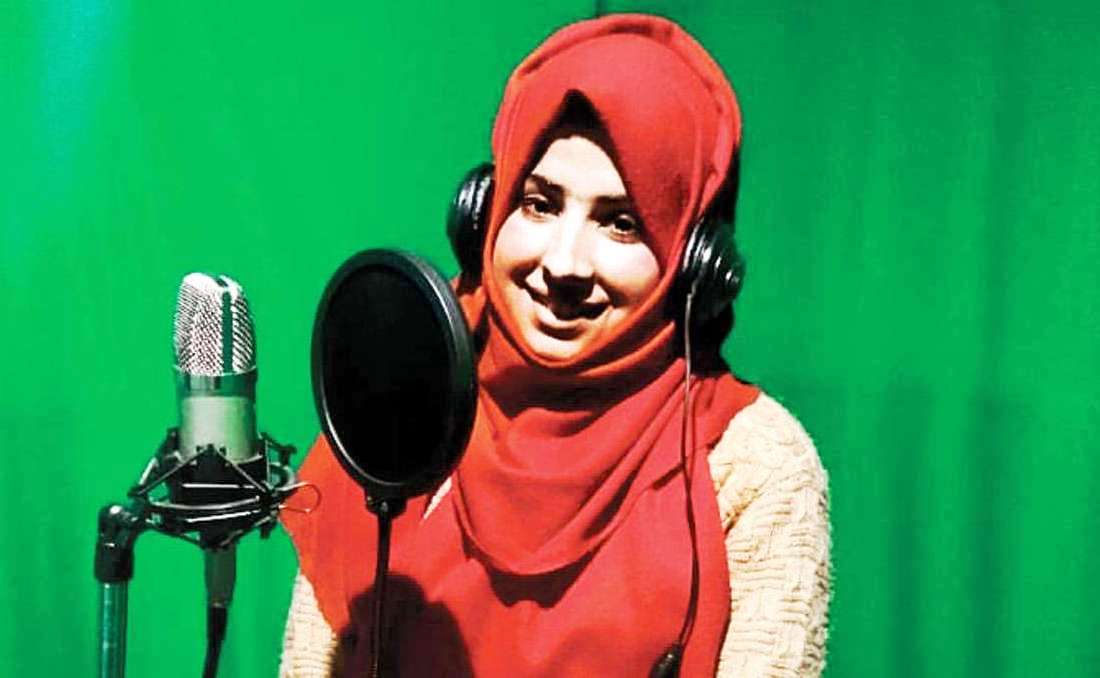
A school dropout, she took over the kitchen chores after her mother passed away. A natural singer, somehow her talent was spotted.
Her most popular song had everything original except the lyrics and the voice. She is on auto-tune. Seemingly, people love machine music and made her a sensation. Many think it is not music at all.
“It is all market-driven. The quality has been relegated to the background,” said Aijaz Rah, a renowned singer and composer.
4: Rinda Ho
Umer Nazir, 29, a resident of Ganderbal’s Nagbal said he felt angry when he saw Punjabi songs playing in Kashmiri cars. Soon, he knew why it was so. Kashmiris listeners wanted modernisation – good instrumentation, better lyrics and – in case of videos, good cinematography. He started dreaming of Kashmiri songs playing in cars and everywhere like the Punjabi.
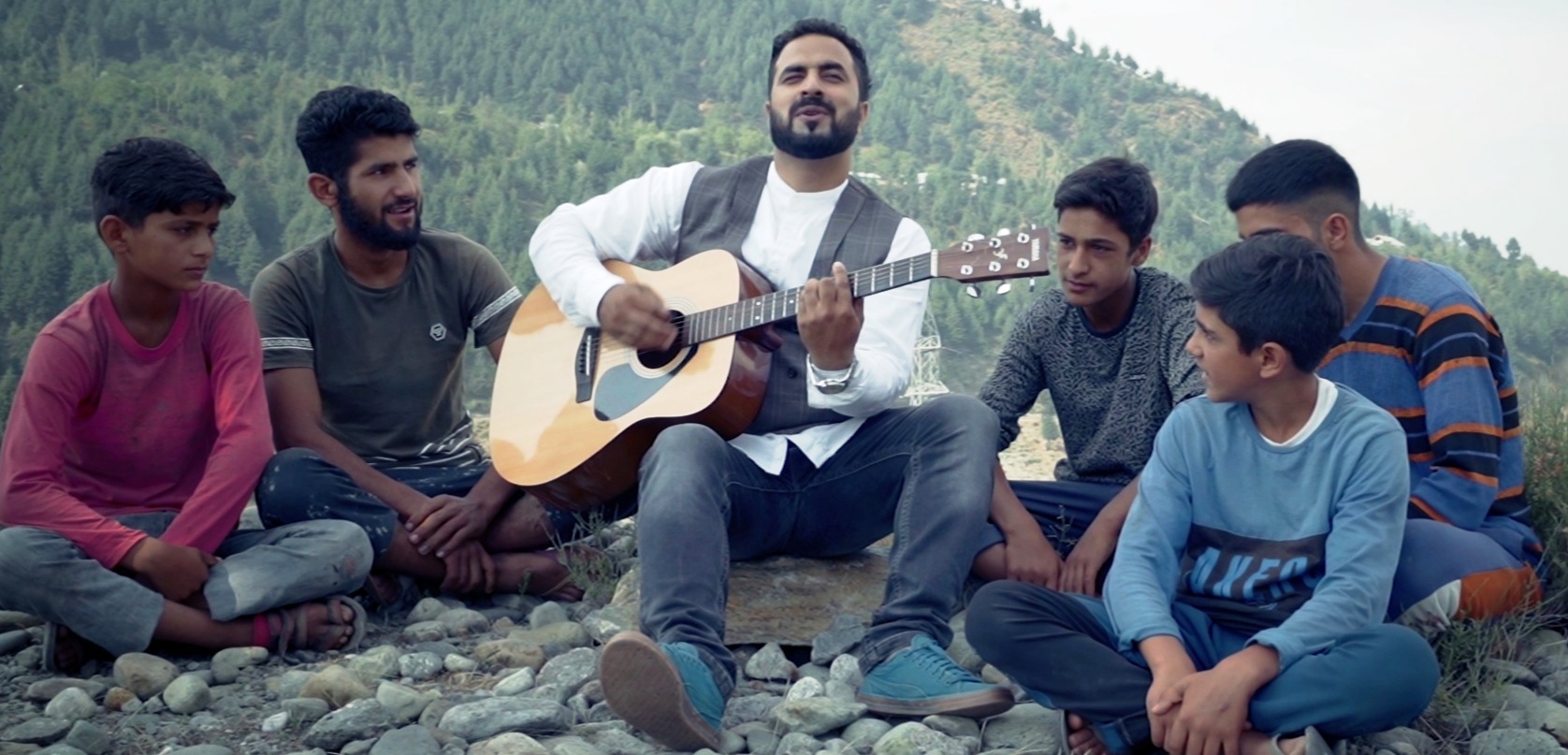
Days after easing of lockdown, on September 1, Nazir released his Rinda Ho on YouTube which took social media by storm. It is sung and performed by Nazir. In a few months, the song has reached 9.9 million, just a thousand short of a crore.
“Rinda Ho is a tribute to the legendary folk singer of our Kashmir, Maqsood Bhat,” Nazir explained on his YouTube channel that has more than two lakh subscribers, now. “This song is actually related to my childhood when I was listening to it on repeat mode and I grew up listening to this song. It was my wish to sing this melodious song on a platform where I can share my beautiful memories and can bring some joyful moments back.”
Nazir is a trained singer. Singing from childhood, he did Bachelors in classical music and masters in music from Mumbai. “In 2010, I won Milay Sur 2. The success provided by the platform was the beginning of a long journey when my audience expanded,” Nazir said. “I performed at various events within and outside Kashmir. I used classical, light music, and western”.
In Kashmir, Nazir regrets lack of platform and institutional support. However, getting millions of views on YouTube was not a cakewalk. “I started my YouTube channel in 2013 and started working in 2017. I simultaneously learned sound engineering which helped me in composing music for songs on my own,” he said.
It was a Hindi song Jabse Mile Ho Tum that he uploaded in March 2017. In three years he got 100 thousand views. Soon he realized he will do better in his mother language. “I want to get people back to our culture,” he said.
Rinda Ho video directed by Ehsan Khan has a storyline envisaging Nazir’s long journey to Kashmir’s different picturesque places (and a ruin) where he meets with people especially children and plays the guitar with them. He goes into gardens along with guitar and is mostly alone throughout the video singing the song. Nazir is the sole focus of the video with his Royal Enfield as the only companion. “It is the way I had imagined it to perform in childhood,” he said.
Admitting the competition, Nazir is supported by a team – a director, a director of photography, and a cinematographer. They work on audio, video and singing skills, script and the story.
“I want to give preference to my language, culture and our lost heritage and history,” Nazir said. “I want to ensure (that) every generation relates to my songs”. In his song, he has used western instruments like guitars, drums, strings, pads, and clap beats. His team has the capacity to have a new song in a fortnight.
Nazir’s channel features many songs, some as popular as Rinda Ho. His Dilbaro number sung deep into the woods with high bass and auto-tune in the voice has six million views.
5: Tche Kameau Sonih Myaineh
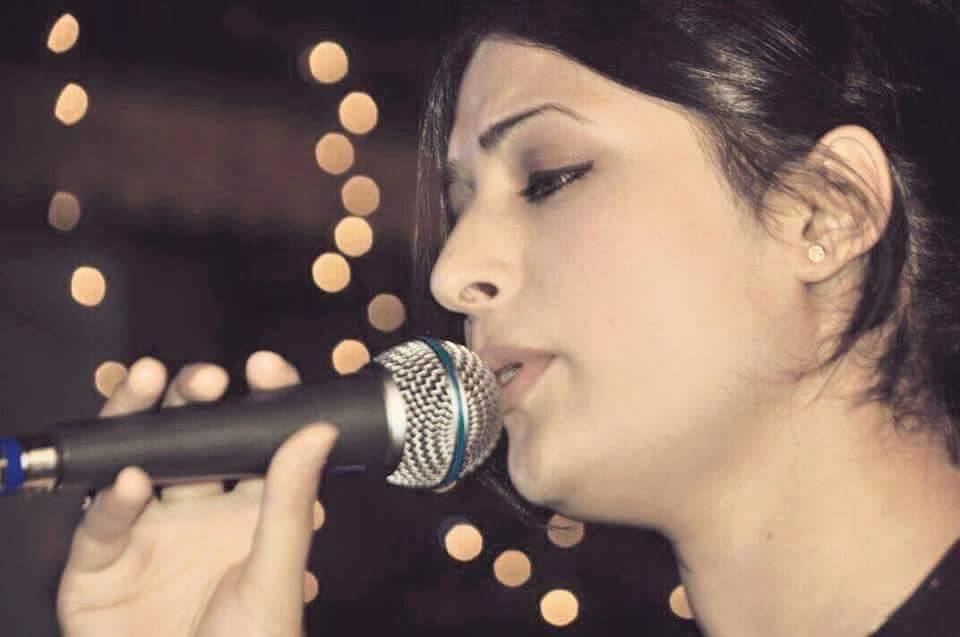
Shazia Bashir is an established young singer who has struggled a lot to be where she is. Like most of the professional singers in Kashmir, she is missing on the virtual media. However, there is an audio of one of her songs Tche Kamu Soni Maini on YouTube. It has nine million views. Believed to have been written by poetess queen Habba Khatoon, the song has been sung by generations in Kashmir.
6: Harmukh Bartal
Sniti Mishra is an Odissa born non-local trained vocalist in Hindustani classical music who appeared for the first time in Zee TV musical reality show, Sa Re Ga Ma Pa. On August 17, 2018, she sang Harmukh Bartal along with Jaan Nissar Lone, a Kashmiri music composer who is based in Mumbai. Its music has been composed by Lone himself while the song has been recorded at AR Studios Mumbai. The professionally done song had a huge team including Diana Khan as Habba Khatoon, Jaan Nissar Lone as Yousuf Shah Chak, and Ajay Gosallia as King Akbar.
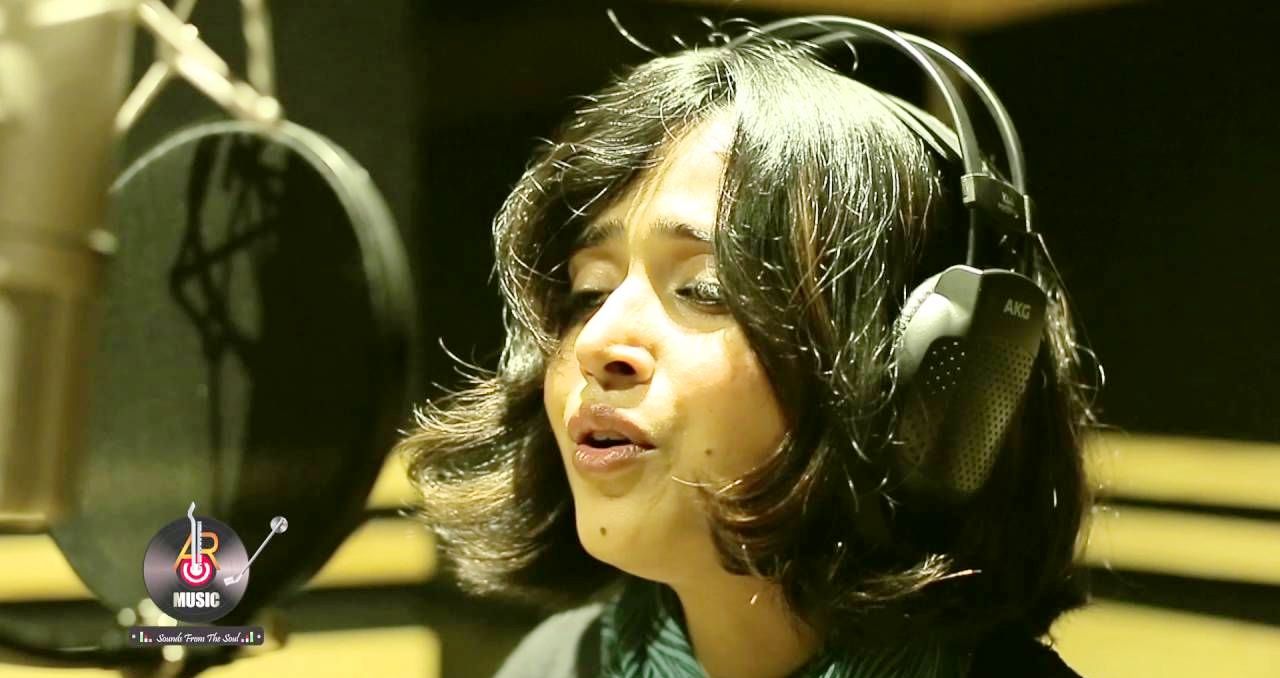
The composers claim to have tried to recreate the situation synonymous with love, separation, longing, and helplessness that Kashmiris history is witness, almost half a millennium when Mughal’s took over Kashmir. The song narrates the story of Yusuf Shah Chak in prison in mainland India and the endless wait of Khatoon in Kashmir. It soon shifts to happy days when the couple were together. Even after centuries, the theme of love, separation and endless wais has not stopped in Kashmir since Chak, its last king was imprisoned before Mughals conquered it.
But as the song narrates the story of love, separation and pain, music along with lyrics tries to blend different themes and emotions. According to Imran Latief, Sniti Mishra has sung it beautifully. The music arrangement is good but you will hardly find any Kashmiri instrument in it. Rather they have Indianised it. Still, it has been watched by six million people.
Suniti is in the reckoning in Kashmir. She has been singing Kashmiri for the last many years now. Her Peer Myanio has three million views in four years; her Khodaya has 17 lakh views. All her Kashmir songs are done by AR Studio.
7: Balyara Ho
Ishfaq Kawa, 25, a resident of Shadipora (Sumbal) started his music journey by rendering Hindi Bollywood songs. As he uploaded these creations on social media, he was responded well. This encouraged him to pick some professional skills.
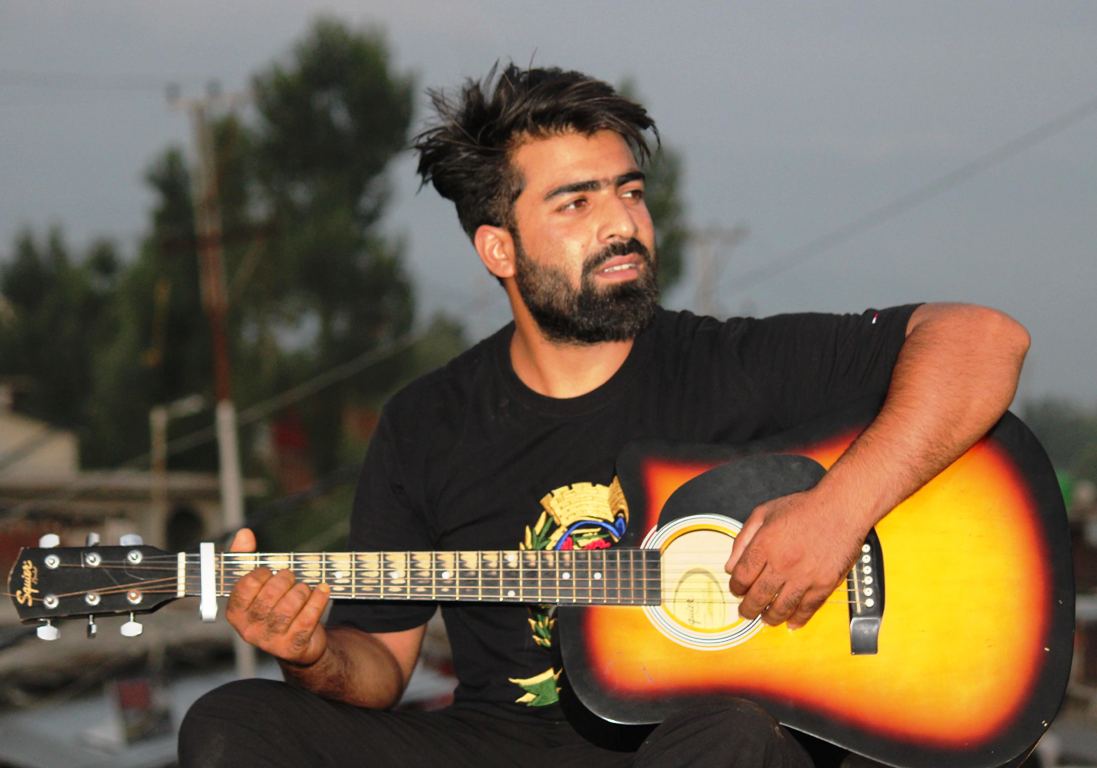
Holding hotel management and ITI diploma, Ishfaq comes from a humble farming background that lacked any connection with the music. Admitting that most of the popular social media videos lack originality, Kawa said he writes his own lyrics so that his creations are original.
In 2017 his song Balyara Ho got 4.5 million views on YouTube. His Afsoos Duniya remix has 4.1 million views the latest Nund Bani has 3.6 million.
Afsoos Duniyais super-duper hit by Kashmir poet Rajab Hamid. In simple language, it narrates the futility of materialistic pursuits, and the person being ultimately deserted by the very world he worked all his life to please. It is a testament of the unreality of real life. Almost every Kashmiri singer has sung it but Ghulam Hasan Sofi has always topped the popularity chart.
Produced at Qalaam Studio by Shah Basit Fazli and Furkaan, the Kawa video starts with a Rabab and a long shot of a graveyard where men have gathered after burying the dead. An old man is seen crying and being consoled. With the change in music instruments the story shifts to the youth of an old man where he is seen juggling a baby. With the onset of melancholic lyrical words and music intonations, the story narrates itself through various stages of the life of an old man and his growing son.
When the child of the old man is in his youth, the video features Kawa vomiting blood. The only asset of an old man that is his son is shown draped in blood, battling to breathe in the hospital. As the old man waits outside the ward with his son’s friends, the doctor informs them of something that makes an old man fall on his knees.
Kawa, however, was made popular by Nundibani Yaar Myaanei, the lyrics of which he said are his own. The song narrates the sadness and struggle of a mother whose son has been missing and she is yearning for his return. The story ends with a sombre note with the mother collapsing when she is told about the news that her missing son had died. It is a song dedicated to the people missing in custody and is about to touch four million. Unlike most of the songs on the virtual world’s popularity charts, this song is original.
His Nund Bani is the outcome of the pain Kawa believes he grew up witnessing in Kashmir.
In a bid to retain the originality, Kawa said he spends more than six weeks on one composition because it requires a story, photography and the originality.
“We added western music in Kashmiri to bring back listeners who were following Punjabi, western or Bollywood,” Kawa said. “We lack sponsors and production houses as the quality of our songs can be enhanced if we can meet industrial requirements.” They spend a few thousand rupees on these compositions. “This imposes its own limitations, unlike Punjabi songs who do not have budget constraints.”
The only change that social media has brought about, Kawa said is that they can connect with the audience without the Radio and Doordarshan. However, the basics remain the same.
8: Hakkus Bukkus
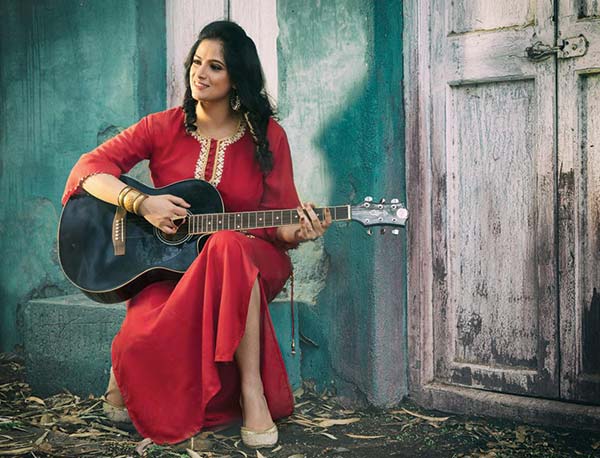
The song Hakkus Bukkus uploaded on YouTube in June 2017 is performed and conceptualised by Aabha Hanjura a former Indian Idol finalist has more than forty-three lakh views. Hukkus Bukkus is a Kashmiri ballad that dips one into nostalgia as it is sung as a lullaby to every Kashmiri kid. The song strikes a chord across all age groups but has gained popularity amongst children according to Hanjura’s YouTube channel. The foot-tapping melodious song which has been performed outside Kashmir is a confluence of traditional Kashmiri instruments and non-local artists, like rabab by Abdul Rashid Shah, Santoor by Umar Majeed Malla, Guitar and Ukulele by Tony Das, Drums and Percussion by Wilfred Demoz, Bass Guitar by Osi Gomango and keyboard programming by Midhun Mukundan. The music has been produced, arranged, recorded, mixed and mastered by Hriday Goswami. Unlike other songs of contemporary Kashmiri singers, the song has been recorded in Lagori Studio, Format studio and Pranava Studios, in Banglore.
“Aabha Hanjura is the founder and vivacious lead singer of the Sufi rock band Sufistication. Since 2005 she has established herself as a unique independent musician who’s reinvented the rare and unique accents of long lost Kashmiri folk sounds and instruments,” according to her YouTube Channel.
Hanjura who lives in Bengaluru now is a Kashmiri migrant Pandit who left Kashmir in early ’90s at the age of three. A few years back she quit her job to pursue her career in music.
9: Nigaaro Chaean Husnan
On March 17, 2019, Chinar Studios released a song Nigaaro Chaean Husnan, Karin Devaneh Keathyah, the lyrics of which were written by Gulaab Saifi Kishtiwari. In less than two years the song has crossed four million views. Mir Iqbal who sang it said he is a self-trained singer who learnt singing by watching and listening on YouTube.
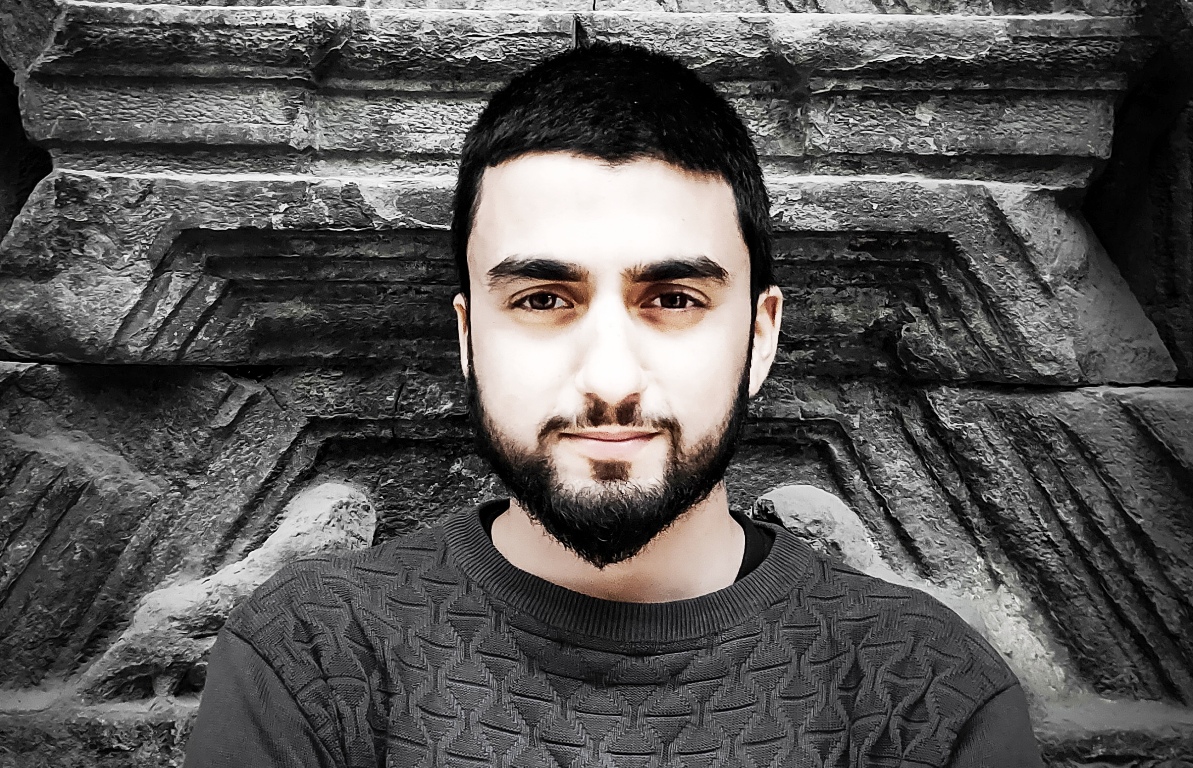
“Even before me, the song was sung by Rashid Jehangir,” Iqbal, a resident of Aali Kadal (Srinagar), said. It is a kind of Sufi song and the video features Iqbal visiting various shrines. “I sang the song in one take. I don’t do singing rituals like practising because I believe if I will go through training or learning I may deviate from my track”.
Before signing the song, Iqbal used to sing naats, poems on the praise of the prophet of Islam. He wants to pursue music as he is confident in his voice and singing skills and wants people to support real content. As he was instantly famous through his song, Iqbal said that it has been more than a year that he has not sung. These days he is working on his channel which is still developing and he hopes to produce better content in future.
10: Ride Home
The song which has been shot on Ganderbal Highway in the winter has more than 3.4 million views. Mohammad Muneem Nazir, who shuttles between Srinagar and Mumbai is a Kashmiri musician, poet, singer and songwriter and a member of a music group called Alif. The Kashmiri and Urdu music, poetry and performance band premiered a Kashmiri single Ride Home on December 2, 2018. Noor Mohammad and Mohammad Muneem Nazir sang it.
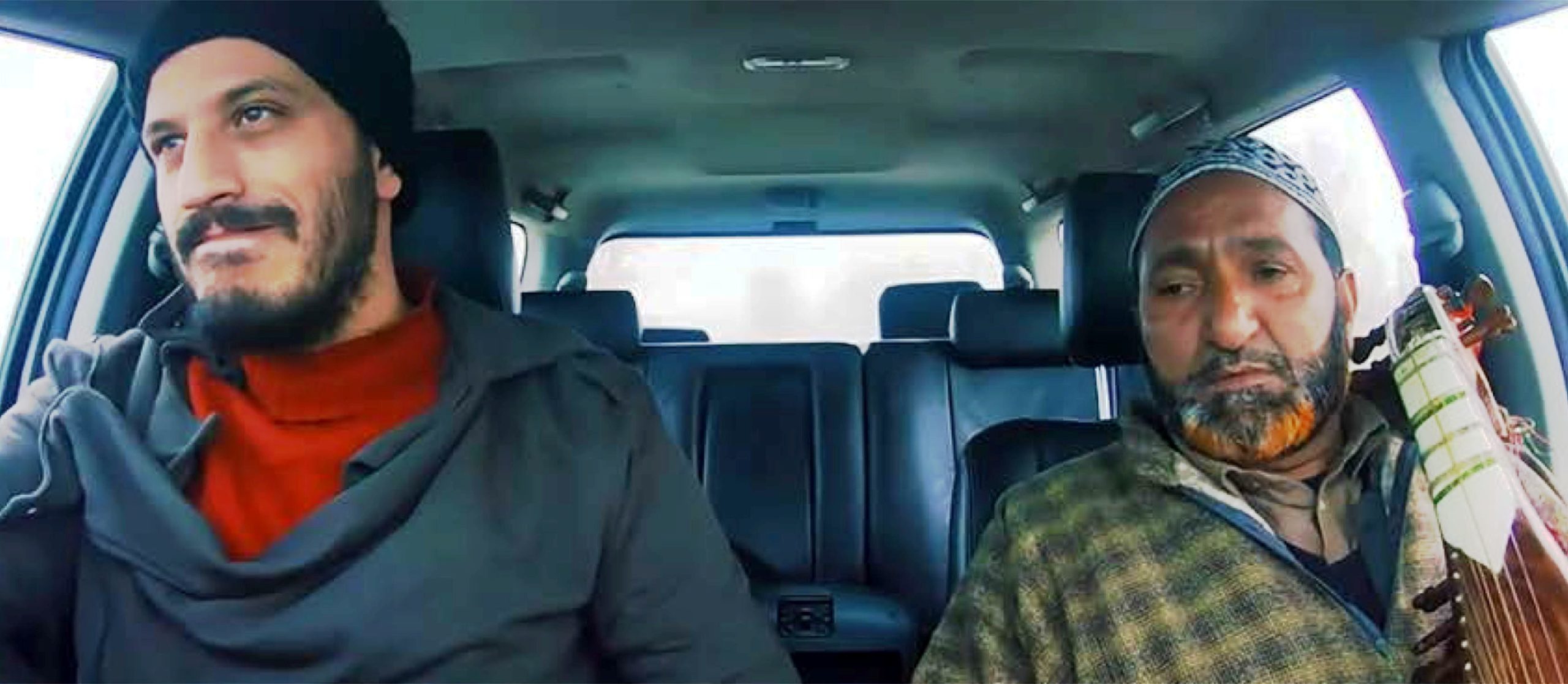
They used Rabab, harmonium, and percussion in the song and its script was written by Muneem himself. The video starts with a drone shot of the road with a white car and soon the camera shifts to central characters, a young man (Muneem), driving a car and an elderly man standing on the road, waiting for a ride. The waiting man is Noor Mohammad, an artist from Kupwara who sings in Sufi mehfils and weddings.
The song sung in the praise of the mother has been a smash hit in Kashmir, throughout. Once it was said that when the records of this number were put on in militant training camps, it would convert into a mourning session.
Chehouv Kanh Wochumnai Wafadar Mouji,
Mein Nish Chaien Tchaie Laveh Samsaar Mouji
(Could not discover anyone as loyal as you, Mother; For me your shadow is worth a universe Mother)’
In between, the song talks about the childhood the youngsters in Kashmir have lost: Loukcharuk Matchar Meoun. Then it moves towards a popular Kashmir ballad. The song brought two generations together on a single platform in a single frame; one with access to an alternative platform like social media to show their talents, the other conventional that may not be that tech-savvy.
“Where are you headed to Jinab,” asks Muneem in the video to which Noor replies, “Home,” while holding a Rabab. “Let’s see where we reach,” says Muneem in response.
Before the song starts, the camera points to two different generations of Kashmir artists with more or less similar problems. They agree with the fact that earning a livelihood is very difficult for artists in the valley.
“So many artists have been lost in time,” laments Noor who in the video initiates singing the song of poet Anjan Kashmiri. Only a few lines of the song have been sung and in between Muneem has brought in another Kashmiri song for kids and his own poetry.
The song displays a sort of symbolism linking mother with the motherland. It is Muneem’s show that Noor actually takes.
Critics
Of the top 10 numbers that dominate the social media viewership suggest that almost half of these numbers neither represent Kashmir music in the literal sense. Experts dub it “noise”.
“In the early 70s and 80s the classical music of which many videos are available like that of legendary Ghulam Hassan Sofi, Vijay Kumar Malla, Shameem Dev, KaileshMehra, Raj Begum and others have different musical arrangements and compositions which were original also,” said Imran Latief, a singer and composer.
During and after the 90s, when Kashmir plunged into turmoil Radio Kashmir and Doordarshan could not deliver popular hits as they lacked good composers and many stakeholders preferred quantity over quality for commercial reasons. As a result, people started disdaining Kashmiri music.
According to ImranLatief, we have been in the process of remixing the old songs and even lack basic music ethics. “Many composers from reputable institutions sang remixes, got popular due to them but never credited the original composers,” Latief said. “The social media acted as an alternative platform where they could showcase their talent without any gatekeeping”.
Later, the worst phase came when indigenous Chakri and Rouf was defiled when Bollywood songs were translated into Kashmiri and cheap lyrics were added to it.
According to Latief, the contemporary popular Kashmiri songs are good but lack originality. The song Nigaroo which has millions of views has already been copied from Bollywood song Dil Diya Hai Jaan B Dege Ai Watan Tere Liye…
Many popular YouTube singers like Sakeena Reshi, according to Latief, have become an object of entertainment for people through their edited singing rather than for singing skills and originality.
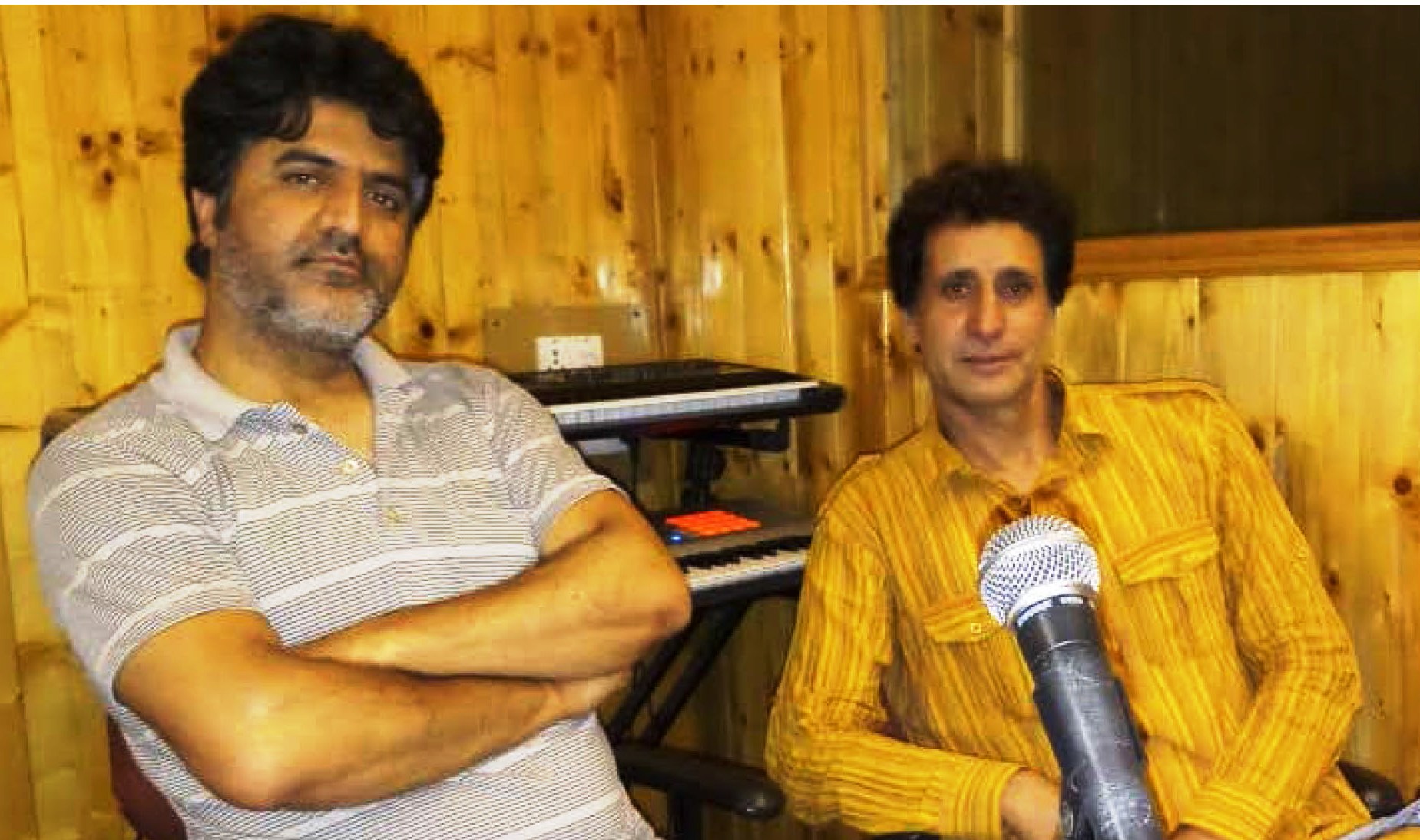
Among the current popular videos like Rashid Jehanghir’s Mayii Chaani Raeavim Raath Doh and Muneem Nazir’s Wafadar Mouji are recreations of old versions.
Questioning the views the YouTube singers garner, Latief said that many of them pay to social media pages to get their songs across to the audiences and make them reach as many people as they can.
“Does popularity and views define substance and standard in the art?” he questioned.
An Orissa resident and a participant of national singing competition programme, SA Re Ga Ma Pa, sang PeereMyaeno composed by Jehnisar Lone, has been copied from Baabul movie’s BaawriPiya song, according to Latief.
As many singers these days use western instruments in their songs, Latief believes that overall it is the departure from standards of music we have produced and composed. “Are listeners ready to pay to listen to music they encourage and promote on social media freely?” he questioned as the culture of critical appreciation has not been developed in Kashmir.
Latief, however, sees the silver lining in the improvement on two levels: musical arrangements and recording quality, audio or visual.
Ajaz Rah, a renowned singer, music director and actor, said that there is a need to do proper justice with lyrics and the singers should know what they are singing. “The young singers will be able to do justice with what they are singing if they sing after proper learning and practice. If they have talent, they can even compose their own music,” Rah said adding that it is becoming a trend to sing already composed popular songs.
“Using auto toner and singing software and cheap catchy lyrics to make the music popular is not the standard of success of any singer,” Rah said about Reshi adding that if they are properly trained they can do better.















